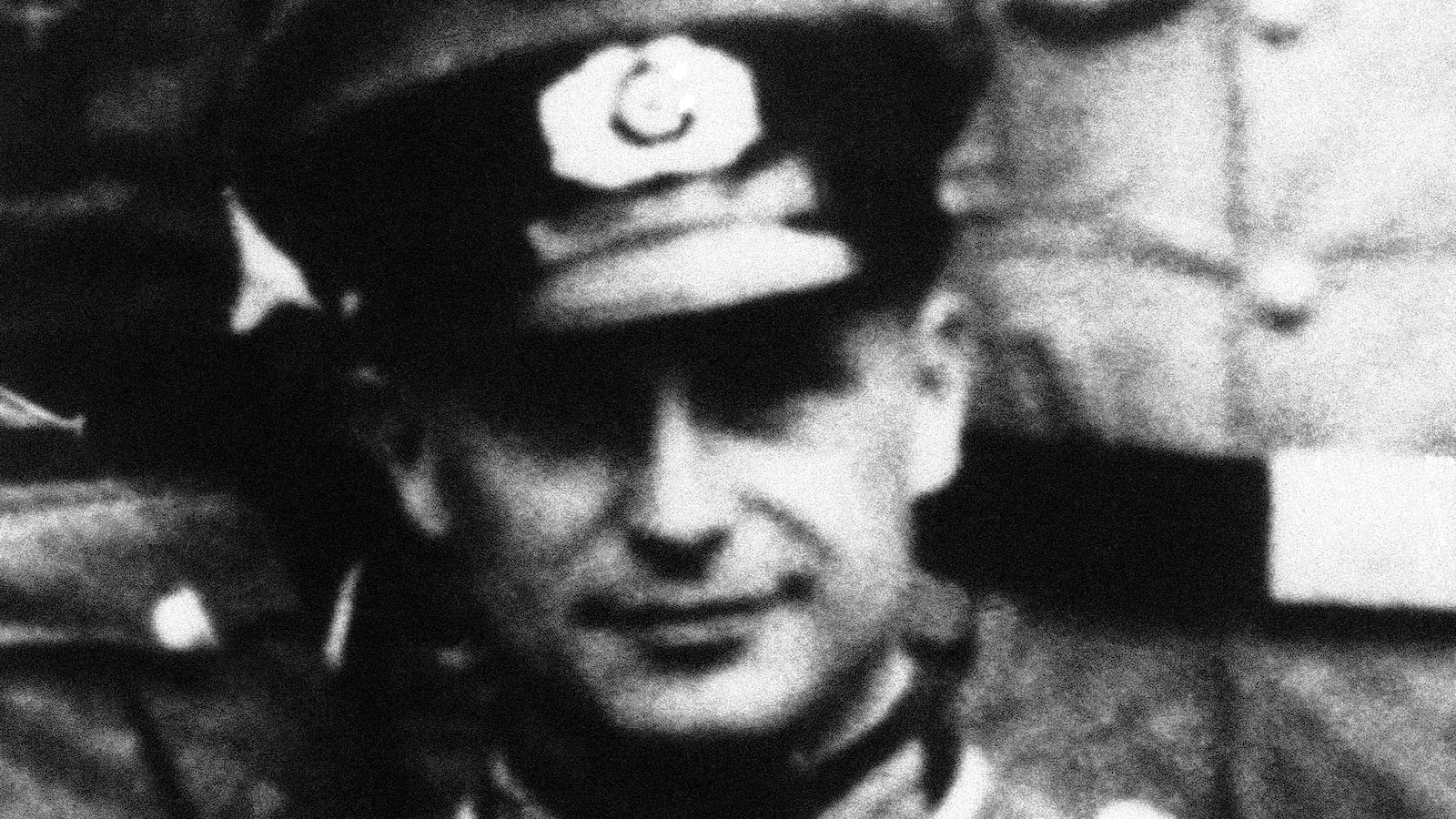Earl Browning was an American intelligence officer who objected to his country’s post-war recruitment of Klaus Barbie.

Earl Browning, the American spy, who has died aged 96, played an honorable role in an extraordinary post-war episode: the recruitment of the former SS captain and Gestapo officer Klaus Barbie by the US Intelligence services.
Barbie became notorious for his role in sending thousands of Jewish men, women and children, as well as members of the Resistance, to concentration camps; he was known as the “Butcher of Lyon” for having personally tortured prisoners of the Gestapo. After the war he escaped to Bolivia, from which he was eventually extradited to face trial in France in the mid-1980s. In 1987 he was sentenced to life imprisonment for crimes against humanity; he died in prison in 1991.
The hearings had been delayed numerous times, prompting suggestions that prominent French politicians were afraid of what he might reveal about their collaborationist pasts. But a key element in the case—one that scarcely surfaced during the trial—was the American involvement with Barbie at the end of the war, itself the reason it took almost 44 years to bring him to justice. The story was formally disclosed in 1983, in a Department of Justice report entitled “Klaus Barbie and the United States Government”.
The context of Barbie’s brief career as an American agent was the chaotic post-war period when Germany was divided into four occupation zones; the enemy was no longer Germany but the Soviet Union, and Nazi war criminals on the run, who were well-connected, experienced and dedicated anti-communists, took to peddling their services from zone to zone for dollars and cigarettes.
In April 1947 Kurt Merk, a former lieutenant in the Abwehr, turned up at the offices of the United States Army Counter Intelligence Corps (CIC) in Memmingen and told Robert Taylor, a young CIC operations officer, that an old friend of his from wartime service in France, a man named Klaus Barbie, was available for hire.
Taylor recognized the name, which was on two Allied lists of wanted war criminals; so he informed his superior in Munich, Lieutenant-Colonel Dale Garvey. They both agreed that Barbie would be a valuable asset, in spite of his “wanted” status. With Garvey’s agreement, Taylor met Barbie at Merk’s flat in Memmingen and formed a favorable impression. At the time Barbie was wanted only for his alleged involvement in a clandestine organization of former SS officers in Germany. Little was known about his stint as Gestapo chief in Lyon. Barbie, naturally, presented a sanitized version of his history.
Browning, then operations officer at the CIC headquarters in Frankfurt, recalled the shock he felt when he learned of Barbie’s recruitment. In October he directed the Munich CIC to arrest Barbie and send him to Frankfurt for “detailed interrogation”.
There ensued a two-month tug-of-war between Browning and Garvey, who argued that arresting Barbie would impair the trust informants placed in the CIC. Browning won the first round. Barbie was arrested in December and questioned until the following May, but he revealed only what was already known—that he had been a member of the SS.
To Browning’s chagrin, the subsequent CIC report argued that Barbie now knew too much about its operations to be put on trial. Although Browning continued to urge the CIC to drop him, Barbie returned to his intelligence activities and remained at large even as more information about his wartime activities began to emerge.
By the beginning of 1949 relations between Merk and Barbie had begun to deteriorate—so much so that Merk decided to tell what he knew, informing Barbie’s handler, Erhard Dabringhaus: “If the Americans found out what Barbie did in France, the atrocities he committed—not even your General Eisenhower could protect him.” Merk recalled that he had once visited Barbie in Montluc prison in Lyon, where “in the basement he had some French Resistance fighters hanging by their thumbs, day after day, until they died”. Yet it was Merk who was dropped as a CIC agent, not Barbie, who remained on the payroll.
In May 1949 a clipping from a Paris newspaper with the headline “Arrest Barbie Our Torturer” was brought to Browning’s attention. “During the Occupation,” the article read, “he burned his victims with an acetylene torch to make them confess during interrogations that lasted more than 48 hours.” Browning showed the clipping to his commanding officer, Colonel David Erskine, who dismissed it on the grounds that the sources were former Resistance fighters, many of whom were communists. Barbie was dropped from CIC records as a precaution. But in all other respects his situation remained the same.
Early the following year, by which time Browning had returned to the United States, the French government formally applied for Barbie’s extradition, putting the CIC in a quandary. On May 4 Colonel Erskine ruled that Barbie should not be placed in the hands of the French (whose intelligence services were thought to have strong links with the Soviet Union). But rather than simply blocking the extradition on intelligence grounds, the CIC denied knowing his whereabouts. If Barbie had been picked up, the deception would have been found out. Barbie became, in CIC-speak, a “difficult disposal case”.
In the end the CIC decided to use a “rat line” developed to spirit compromised agents and defectors from the Eastern bloc to South America, and on March 23 1951 Barbie and his family boarded an Italian ship in Genoa, bound for Buenos Aires. Barbie would spend the next three decades living the life of a businessman and member of La Paz’s large German colony, under the protection of successive Bolivian regimes.
It was not until 1983, after the publication of the Department of Justice’s report, that the United States formally apologized to France for having engineered Barbie’s escape.
Earl Staten Browning was born in Mediapolis, Iowa, on September 7 1917 and took a Master’s degree in journalism at the University of Iowa. During the Second World War he served as an officer in the CIC, rising to the rank of colonel. After taking part in the Normandy landings and the Battle of the Bulge, in April 1945 he was involved in the capture of Munich, and subsequently visited Dachau a day or two after the camp’s liberation. It was this experience that made him realize what the Nazis were capable of and which lay behind his opposition to Barbie’s recruitment.
In August 1949 Browning returned to the United States, where he took two more degrees, in Politics and Public Affairs. He became an Army public affairs officer, working for the Armed Forces Radio and Television Service and serving in Saigon in the late 1960s.
Earl Browning’s wife, Elisabeth, died in 2005. He is survived by their daughter and two sons.
More From The Telegraph:
This article was first published by The Telegraph.






